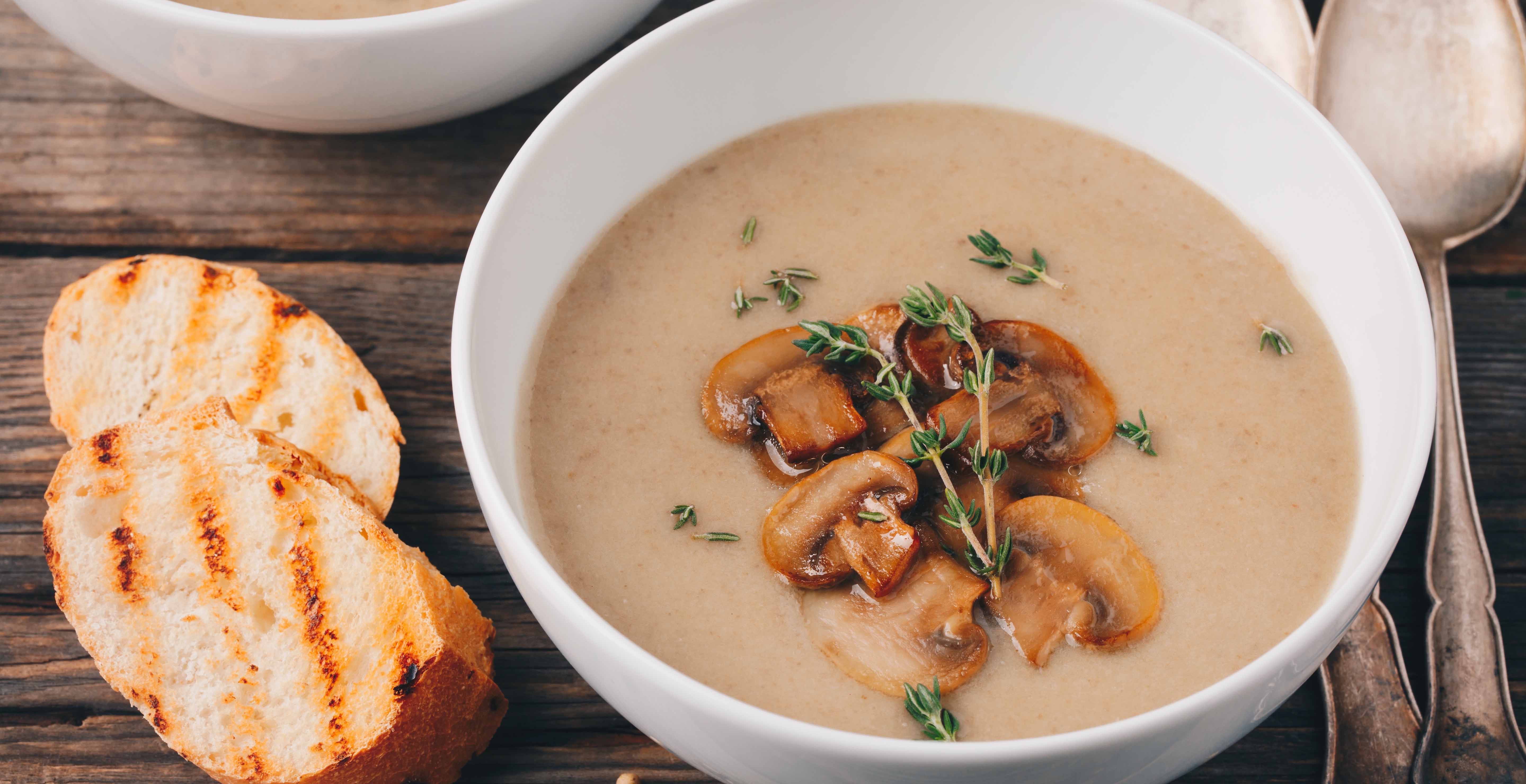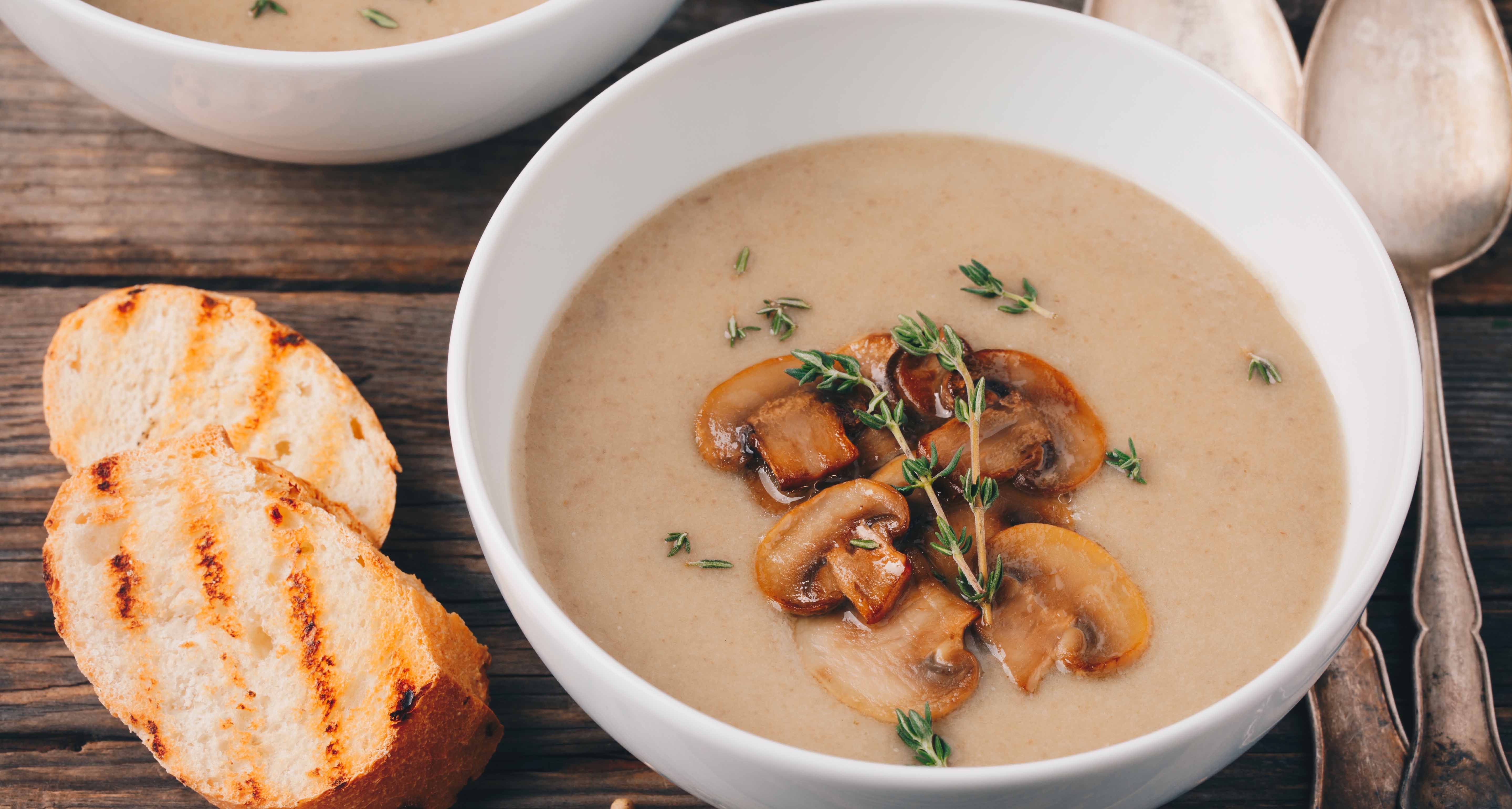Soup's On!


With the cold weather rapidly approaching it’s time to dig out that stock pot and make all your favourite soups for the upcoming winter season. Soup is a filling, nutritious and portable option for any meal, and thanks to batch cooking and freezing there’s never been an easier way to have soup on the table in under 10 minutes. The following food safety and prep tips will have you stocking your fridge and freezer full of delicious soup faster than you can say “mulligatawny”!
Batch cooking soup
When batch cooking pasta-based soups such as chicken noodle, vegetable orzo soup or minestrone make the noodles separately and add as needed. Pasta can soak up surprisingly large amounts of liquid, leaving you with bloated, soggy noodles with very little soup. Pre-cooked pasta can even be frozen in individual portions and added to reheated soup as needed.
If the soup requires any kind of crunchy garnish, swirl of cream, drizzle of oil, or a handful of fresh herbs make sure these are added right before serving (not as part of the batch prepping and cooking.) However, if you know you’ll be eating soup all week long feel free to batch prep the garnishes to add right before serving for even speedier weekday meals.
Batch cooking is fantastic way to get the whole family involved with meal prep. Younger children can help chop vegetables, stir the soup, and help with cleanup. Everyone else can help pick out new soup recipes, shop for ingredients and prep the meat, poultry, and sturdier vegetables.
Simplify the batch cooking process and use convenience items to save time. Pre-chopped garlic, ginger, and onions are particularly helpful and will speed up the cooking process considerably. Frozen vegetables such as corn, butternut squash, carrots, peas, and broccoli can be used interchangeably with fresh vegetables.
Always cool soups before attempting to blend them, even if using a hand blender. If you don’t scald yourself with the hot soup, you can easily end up with it all over your countertops, sink, and kitchen ceiling.
Freezing soup
Never transfer hot soup directly to a cold freezer, the residual heat from the soup can lower the temperature of your freezer (a definite food safety no-no.) Cool down the soup as quickly as possible by placing the entire pot of soup in the fridge (on top of a folded tea towel or pot holder) or by setting the pot directly into a sink filled with plenty of ice water.
When filling resealable containers leave enough space at the top of the container for the soup to expand as it freezes (ideally about an inch of space between the soup and the lid.)
Storing frozen soup in resealable freezer bags is a great way to save space. Fill each bag about two thirds of the way with soup and lay flat to freeze, this freezing method will allow you to stack the soup once it’s frozen.
Always mark each container or freezer bag with the contents of the bag and when it was frozen with a permanent black marker (or write on a piece of masking tape.) You might be convinced that you’ll remember what that frozen block of soup is and when it was put into the freezer, but chances are, four months from now you absolutely won’t.
Soups that are great for freezing include minestrone soup (add cooked pasta shapes when reheating), pureed vegetables soups, stews, chicken noodle soup (again, add cooked noodles when reheating), bean and lentil soups, and grain-based soups.
Avoid freezing soups that contain a high amount of dairy (this is especially true of lower fat dairy products), when dairy thaws it can separate and become gritty. Seafood soup of any type, especially those with delicate fish and shellfish, has a tendency to taste stronger the longer it sits in the freezer (and the texture will suffer when it’s thawed out.)
Frozen soup can be defrosted overnight in the fridge, in the microwave or over the stovetop (run the container or freezer bag under warm water to loosen.)
